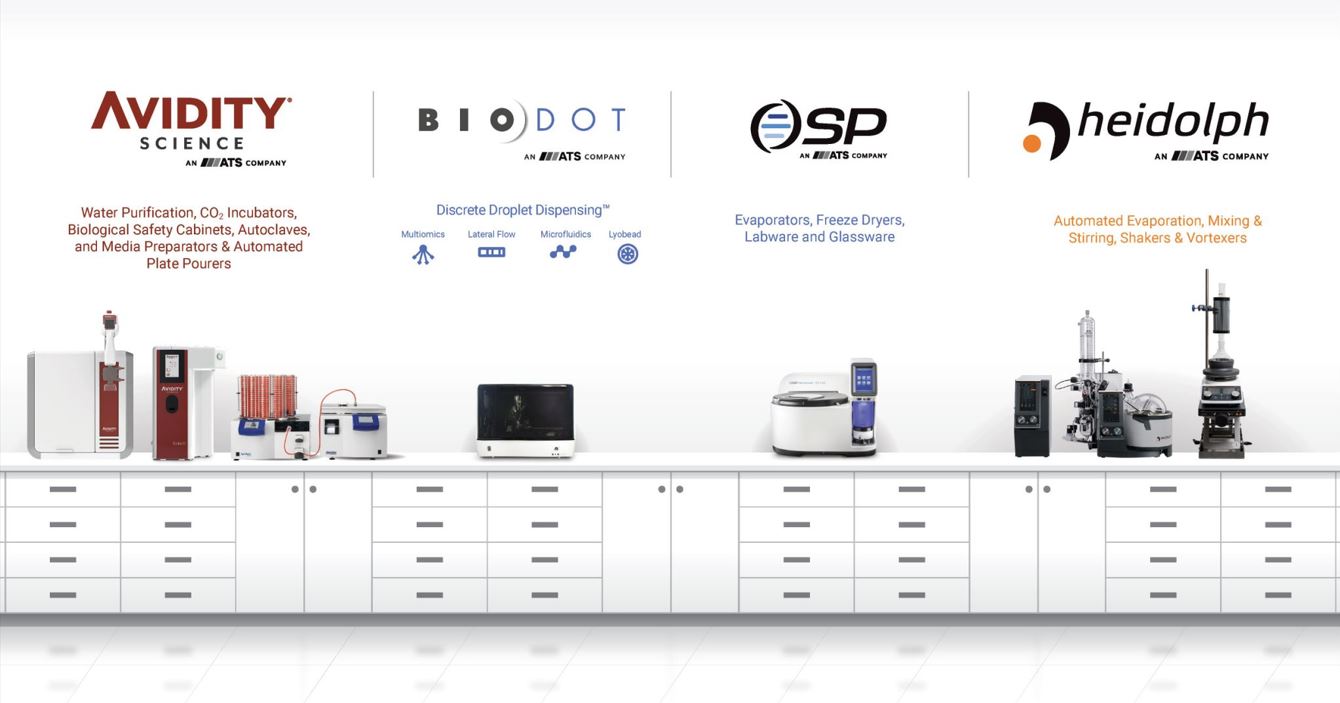Multiplexing the Future: Microarrays

BioDot has a long history working with microarrays. Researchers and companies around the world utilize our technology to rapidly print complex patterns of DNA, proteins, and polymers. BioDot’s tools enable scientists to analyze thousands of genes and proteins. As research advances, we gain a more comprehensive picture of genetic and protein profiles.
In this blog, we will focus on DNA and protein microarrays, including how BioDot’s automated liquid handling robots can allow the manufacturing of your own custom microarrays!
(DNA) Chips on My Shoulder
We’ll start with DNA Microarrays, commonly known as ‘gene chips.’ These microarrays are constructed with small, solid supports such as a glass slide. Fragments of single-stranded DNA (called ‘probes’) are dispensed onto a grid on these slides. DNA in a test sample is then given the opportunity to bind to the probes. The chips are then evaluated for binding at probe sites, and the expression levels of thousands of genes are analyzed simultaneously. Analyzing a DNA microarray is as simple as using fluorescent dye to find illuminated points on the chip.
These types of microarrays can be manufactured with advanced liquid handling instruments. Precision and accuracy allow laboratories to save money on costly probes, taking what might cost hundreds or thousands of dollars down to a much more reasonable price in the double digits or less.

Protein Power
Protein microarrays, although conceptually similar to DNA microarrays, are used to identify more than just protein-protein interactions. They can also be used to identify protein-lipid, protein-DNA, and protein-small molecule interactions. This technology enables high-throughput screening (HTS) of protein functions, crucial in fields such as drug discovery and development. The ability to analyze protein interactions on such a large scale can provide valuable insights into biological processes and pathways.
Discrete Droplet Dispensing
This is where BioDot’s advantage shines. Our liquid dispensing systems have been used to reliably spot DNA probes including profiling glycans on cells1 to detecting food-borne pathogens.2 BioDot’s dispensing systems have also been involved in printing proteins onto polymer surfaces to test for allergens,3 identify types of antigens to use in vaccines,4 and design new fabrication methods for protein microarrays.5 Our instruments have also been used to deposit monomers onto a substrate for discoveries in material sciences.6 Additionally, researchers have used our technology to print monomers on glass surfaces to investigate how bacterial cells explore and interact with surfaces to form biofilms.7
With our systems, we can ensure consistent, accurate, and high-speed dispensing, minimize manual errors, and increase the reliability of the results. Our systems can be programmed to perform on-the-fly dispensing to allow for high-throughput processing, a necessity when dealing with thousands of genes or proteins. If you are looking for a powerful instrument to design your next generation microarray, contact us for a feasibility assessment!
References
- Chen, Y., Ding, L., Liu, T., & Ju, H. (2013). Arrayed profiling of multiple glycans on whole living cell surfaces. Analytical chemistry, 85(22), 11153-11158.
- Li, Y. (2016). Establishment and Application of a Visual DNA Microarray for the Detection of Food-borne Pathogens. Analytical Sciences, 32(2), 215-218.
- Kalli, M., Blok, A., Jiang, L., Starr, N., Alcocer, M. J., & Falcone, F. H. (2020). Development of a protein microarray-based diagnostic chip mimicking the skin prick test for allergy diagnosis. Scientific Reports, 10(1), 18208.
- Vigil, A., Ortega, R., Nakajima‐Sasaki, R., Pablo, J., Molina, D. M., Chao, C. C., ... & Felgner, P. L. (2010). Genome‐wide profiling of humoral immune response to Coxiella burnetii infection by protein microarray. Proteomics, 10(12), 2259-2269.
- Li, B. Y., Juang, D. S., Adak, A. K., Hwang, K. C., & Lin, C. C. (2017). Fabrication of a protein microarray by fluorous-fluorous interactions. Scientific Reports, 7(1), 7053.
- Hook, A. L., Chang, C. Y., Yang, J., Scurr, D. J., Langer, R., Anderson, D. G., ... & Alexander, M. R. (2012). Polymer microarrays for high throughput discovery of biomaterials. JoVE (Journal of Visualized Experiments), (59), e3636.
- Carabelli, A. M., Isgró, M., Sanni, O., Figueredo, G. P., Winkler, D. A., Burroughs, L., ... & Alexander, M. R. (2020). Single-cell tracking on polymer microarrays reveals the impact of surface chemistry on Pseudomonas aeruginosa twitching speed and biofilm development. ACS Applied Bio Materials, 3(12), 8471-8480.
About the Author

Wesley Thio is an Associate Product Marketing Manager at BioDot Inc. He obtained his B.S in Electrical and Computer Engineering at The Ohio State University in 2018 and his M.S in Electrical and Computer Engineering at the University of Michigan. His research studies in chaotic circuits, batteries and AI accelerator hardware have resulted in no less than a dozen publications, several patents and the textbook Elegant Circuits: Simple Chaotic Oscillators. He won Ohio State’s Next Generation Innovator award in 2018.





